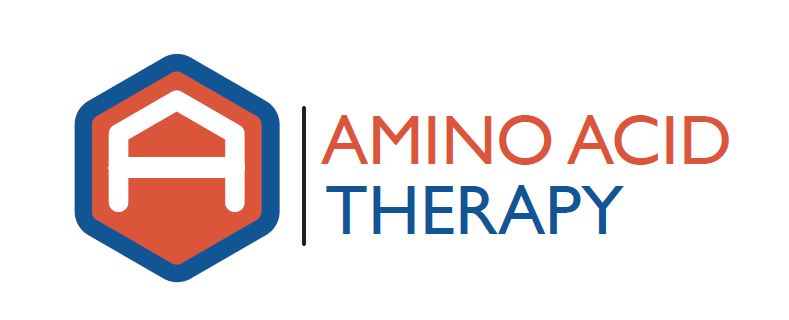by aatadmin | Jan 17, 2018 | Amino Acid Therapy, Neurotransmitters, Parkinson's Disease, Symptoms of Neurotransmitter Imbalance
 Many people are on medications that alter, mimic or in some way manipulate neurotransmitter levels in the body. These include stimulants, such as amphetamines (i.e., methamphetamine, “speed”, Adderall, Vyvanse, Dexedrine), ecstasy (MDMA), cocaine, and methylphenidate (i.e., Ritalin, Concerta); norepinephrine-reuptake inhibitors (i.e., Strattera, Edronax); norepinephrine-dopamine reuptake inhibitors (i.e., Wellbutrin, Zyman); selective serotonin reuptake inhibitors (i.e., Paxil, Prozac, Zoloft, Celexa, Lexapro and Luvox); triptans (i.e., Imitrex, Maxalt, Amerge, Zomig); sleep aids (i.e., Ambien, Lunesta); barbiturates (i.e., phenobarbital, Fioricet); benzodiazepines (i.e., Xanax, Klonopin, Valium, Lorazepam); MAO inhibitors (i.e., Azilect, selegiline, Nardil, Morplan); COMT inhibitors (i.e., Comtan, Tasmar); and carbidopa/levodopa (i.e., Sinamet, Rytary, Stalevo). While these medications may exacerbate or cause neurotransmitter imbalances in the body, most can be safely used along with amino acid therapy to achieve optimal neurotransmitter function. (more…)
Many people are on medications that alter, mimic or in some way manipulate neurotransmitter levels in the body. These include stimulants, such as amphetamines (i.e., methamphetamine, “speed”, Adderall, Vyvanse, Dexedrine), ecstasy (MDMA), cocaine, and methylphenidate (i.e., Ritalin, Concerta); norepinephrine-reuptake inhibitors (i.e., Strattera, Edronax); norepinephrine-dopamine reuptake inhibitors (i.e., Wellbutrin, Zyman); selective serotonin reuptake inhibitors (i.e., Paxil, Prozac, Zoloft, Celexa, Lexapro and Luvox); triptans (i.e., Imitrex, Maxalt, Amerge, Zomig); sleep aids (i.e., Ambien, Lunesta); barbiturates (i.e., phenobarbital, Fioricet); benzodiazepines (i.e., Xanax, Klonopin, Valium, Lorazepam); MAO inhibitors (i.e., Azilect, selegiline, Nardil, Morplan); COMT inhibitors (i.e., Comtan, Tasmar); and carbidopa/levodopa (i.e., Sinamet, Rytary, Stalevo). While these medications may exacerbate or cause neurotransmitter imbalances in the body, most can be safely used along with amino acid therapy to achieve optimal neurotransmitter function. (more…)
by aatadmin | Dec 6, 2017 | Amino Acid Therapy, dopamine dominance, Neurotransmitters, Parkinson's Disease
 We get requests everyday from people looking for a practitioner in their area that uses amino acid therapy. The best place to start is to contact NeuroResearch at www.neurosupport.com and ask them if there is anyone near you that has taken a training with Marty Hinz, MD in your area; they have the most complete list of providers in the country and should be able to find someone you can contact. (more…)
We get requests everyday from people looking for a practitioner in their area that uses amino acid therapy. The best place to start is to contact NeuroResearch at www.neurosupport.com and ask them if there is anyone near you that has taken a training with Marty Hinz, MD in your area; they have the most complete list of providers in the country and should be able to find someone you can contact. (more…)
by aatadmin | Nov 8, 2017 | Amino Acid Therapy, dopamine dominance, Parkinson's Disease
 We have now seen over one hundred clients that had previously been working with other providers for guidance using amino acid therapy. Many of these clients had previous DBS testing completed to help them determine how to optimize their neurotransmitter function. Unfortunately, they did not follow the correct preparation procedure to complete the test and got erroneous results, which then led to erroneous recommendations from their health care providers and sub-optimal resolution of their symptoms. (more…)
We have now seen over one hundred clients that had previously been working with other providers for guidance using amino acid therapy. Many of these clients had previous DBS testing completed to help them determine how to optimize their neurotransmitter function. Unfortunately, they did not follow the correct preparation procedure to complete the test and got erroneous results, which then led to erroneous recommendations from their health care providers and sub-optimal resolution of their symptoms. (more…)
by aatadmin | Oct 11, 2017 | Amino Acid Therapy, dopamine dominance, Parkinson's Disease
 Once it has been determined that a person is dopamine dominant (via the successful completion of a dopamine challenge), the next step in optimizing neurotransmitter function is determining the amount of L-dopa needed (from standardized mucuna pruriens) to maximize symptom control. In order to do that, periodic adjustments are made to the mucuna dosing followed by a pill stop. Successfully completing a pill stop can provide valuable information on how to proceed; unfortunately, many people do pill stops incorrectly, which delays the optimization of their neurotransmitter function and symptom relief. (more…)
Once it has been determined that a person is dopamine dominant (via the successful completion of a dopamine challenge), the next step in optimizing neurotransmitter function is determining the amount of L-dopa needed (from standardized mucuna pruriens) to maximize symptom control. In order to do that, periodic adjustments are made to the mucuna dosing followed by a pill stop. Successfully completing a pill stop can provide valuable information on how to proceed; unfortunately, many people do pill stops incorrectly, which delays the optimization of their neurotransmitter function and symptom relief. (more…)
by aatadmin | Aug 30, 2017 | Adrenal Fatigue, Amino Acid Therapy, dopamine dominance, Parkinson's Disease, restless legs
 Since introducing the idea of dopamine dominance, I have received several questions about the difference between dopamine dominance and the dopamine challenge. This post will attempt to clarify these two important points. (more…)
Since introducing the idea of dopamine dominance, I have received several questions about the difference between dopamine dominance and the dopamine challenge. This post will attempt to clarify these two important points. (more…)
by aatadmin | Jun 7, 2017 | Amino Acid Therapy, dopamine dominance, Parkinson's Disease
 Marty Hinz, MD has published a number of breakthrough papers over the past several years on Parkinson’s disease (PD). However, this research has potential implication well beyond those that suffer from PD. (more…)
Marty Hinz, MD has published a number of breakthrough papers over the past several years on Parkinson’s disease (PD). However, this research has potential implication well beyond those that suffer from PD. (more…)
 Many people are on medications that alter, mimic or in some way manipulate neurotransmitter levels in the body. These include stimulants, such as amphetamines (i.e., methamphetamine, “speed”, Adderall, Vyvanse, Dexedrine), ecstasy (MDMA), cocaine, and methylphenidate (i.e., Ritalin, Concerta); norepinephrine-reuptake inhibitors (i.e., Strattera, Edronax); norepinephrine-dopamine reuptake inhibitors (i.e., Wellbutrin, Zyman); selective serotonin reuptake inhibitors (i.e., Paxil, Prozac, Zoloft, Celexa, Lexapro and Luvox); triptans (i.e., Imitrex, Maxalt, Amerge, Zomig); sleep aids (i.e., Ambien, Lunesta); barbiturates (i.e., phenobarbital, Fioricet); benzodiazepines (i.e., Xanax, Klonopin, Valium, Lorazepam); MAO inhibitors (i.e., Azilect, selegiline, Nardil, Morplan); COMT inhibitors (i.e., Comtan, Tasmar); and carbidopa/levodopa (i.e., Sinamet, Rytary, Stalevo). While these medications may exacerbate or cause neurotransmitter imbalances in the body, most can be safely used along with amino acid therapy to achieve optimal neurotransmitter function. (more…)
Many people are on medications that alter, mimic or in some way manipulate neurotransmitter levels in the body. These include stimulants, such as amphetamines (i.e., methamphetamine, “speed”, Adderall, Vyvanse, Dexedrine), ecstasy (MDMA), cocaine, and methylphenidate (i.e., Ritalin, Concerta); norepinephrine-reuptake inhibitors (i.e., Strattera, Edronax); norepinephrine-dopamine reuptake inhibitors (i.e., Wellbutrin, Zyman); selective serotonin reuptake inhibitors (i.e., Paxil, Prozac, Zoloft, Celexa, Lexapro and Luvox); triptans (i.e., Imitrex, Maxalt, Amerge, Zomig); sleep aids (i.e., Ambien, Lunesta); barbiturates (i.e., phenobarbital, Fioricet); benzodiazepines (i.e., Xanax, Klonopin, Valium, Lorazepam); MAO inhibitors (i.e., Azilect, selegiline, Nardil, Morplan); COMT inhibitors (i.e., Comtan, Tasmar); and carbidopa/levodopa (i.e., Sinamet, Rytary, Stalevo). While these medications may exacerbate or cause neurotransmitter imbalances in the body, most can be safely used along with amino acid therapy to achieve optimal neurotransmitter function. (more…)
 We get requests everyday from people looking for a practitioner in their area that uses amino acid therapy. The best place to start is to contact NeuroResearch at
We get requests everyday from people looking for a practitioner in their area that uses amino acid therapy. The best place to start is to contact NeuroResearch at  We have now seen over one hundred clients that had previously been working with other providers for guidance using amino acid therapy. Many of these clients had previous DBS testing completed to help them determine how to optimize their neurotransmitter function. Unfortunately, they did not follow the correct preparation procedure to complete the test and got erroneous results, which then led to erroneous recommendations from their health care providers and sub-optimal resolution of their symptoms.
We have now seen over one hundred clients that had previously been working with other providers for guidance using amino acid therapy. Many of these clients had previous DBS testing completed to help them determine how to optimize their neurotransmitter function. Unfortunately, they did not follow the correct preparation procedure to complete the test and got erroneous results, which then led to erroneous recommendations from their health care providers and sub-optimal resolution of their symptoms.  Once it has been determined that a person is
Once it has been determined that a person is  Since introducing the idea of
Since introducing the idea of  Marty Hinz, MD has published a number of breakthrough papers over the past several years on Parkinson’s disease (PD). However, this research has potential implication well beyond those that suffer from PD.
Marty Hinz, MD has published a number of breakthrough papers over the past several years on Parkinson’s disease (PD). However, this research has potential implication well beyond those that suffer from PD. 